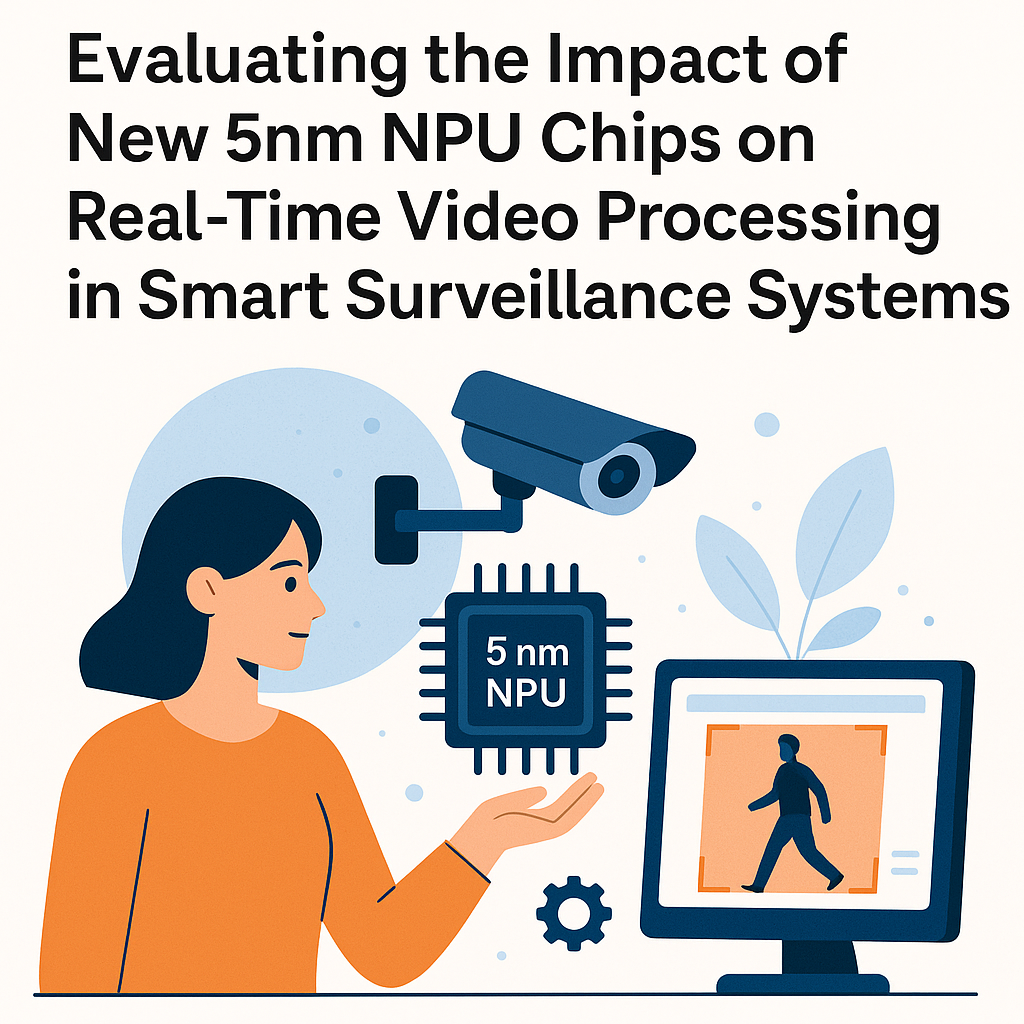Introduction
As technology continues to evolve, the efficiency and performance of smart surveillance systems are enhanced through advanced hardware. One of the most significant advancements is the introduction of 5nm neural processing unit (NPU) chips, which are designed to improve real-time video processing capabilities. This blog will evaluate the impact of these cutting-edge chips on smart surveillance systems, focusing on their performance, benefits, and potential challenges.
Understanding 5nm NPU Technology
The 5nm process technology represents a significant leap in semiconductor manufacturing, allowing for greater transistor density and improved energy efficiency. This section will delve into the essential features of 5nm NPU chips:
- Higher Performance: With more transistors packed into a smaller space, 5nm chips can perform computations faster, which is crucial for real-time video processing.
- Lower Power Consumption: The efficiency of 5nm chips leads to reduced power consumption, making devices more sustainable and cost-effective.
- Enhanced AI Capabilities: These chips are designed to accelerate artificial intelligence (AI) tasks, enabling advanced features such as object detection and facial recognition.
The Role of Video Processing in Smart Surveillance
Smart surveillance systems rely heavily on video processing to analyze footage in real time. Here are some critical functions that benefit from advanced NPU chips:
- Motion Detection: Identifying movement in video feeds is essential for triggering alerts and responses.
- Facial Recognition: Enhanced processing power allows for quicker identification of individuals, improving security measures.
- Behavior Analysis: AI algorithms can analyze behavior patterns, helping to identify suspicious activities.
Impact of 5nm NPU Chips on Real-Time Video Processing
The integration of 5nm NPU chips into smart surveillance systems significantly impacts video processing capabilities:
- Improved Speed: The increased processing speed allows for real-time analysis of high-definition video streams without lag, enabling immediate responses to incidents.
- Better Accuracy: Enhanced algorithms run on NPU chips improve the accuracy of detection and recognition tasks, minimizing false positives.
- Scalability: The efficiency of 5nm technology allows for easier scaling of surveillance systems, accommodating more cameras and data streams without degradation in performance.
Benefits of Implementing 5nm NPU Chips
The benefits of utilizing 5nm NPU chips in smart surveillance systems are numerous:
- Cost Efficiency: Lower power consumption translates to reduced operational costs, allowing organizations to allocate resources more efficiently.
- Enhanced Security: Faster and more accurate processing capabilities lead to improved security measures and quicker incident response times.
- Future-Proofing: As demands for surveillance technology increase, integrating advanced NPU chips ensures that systems remain relevant and effective.
Challenges and Considerations
Despite the numerous advantages, there are challenges associated with the adoption of 5nm NPU chips:
- Cost of Implementation: The initial investment in advanced technology can be significant, which may deter some organizations from upgrading their systems.
- Complexity of Integration: Integrating new chips into existing systems requires careful planning and expertise, which can pose logistical challenges.
- Data Privacy Concerns: With enhanced capabilities in surveillance comes the responsibility of ensuring that personal data is handled ethically and securely.
Conclusion
The advent of 5nm NPU chips marks a transformative phase in the landscape of smart surveillance systems. Their ability to enhance real-time video processing through improved speed, accuracy, and efficiency opens up new possibilities for security applications. While challenges remain in terms of cost and integration, the potential benefits far outweigh the drawbacks. As organizations increasingly prioritize security, the deployment of 5nm NPU technology will likely become integral to the future of smart surveillance systems, ultimately leading to safer environments and more effective monitoring solutions.



